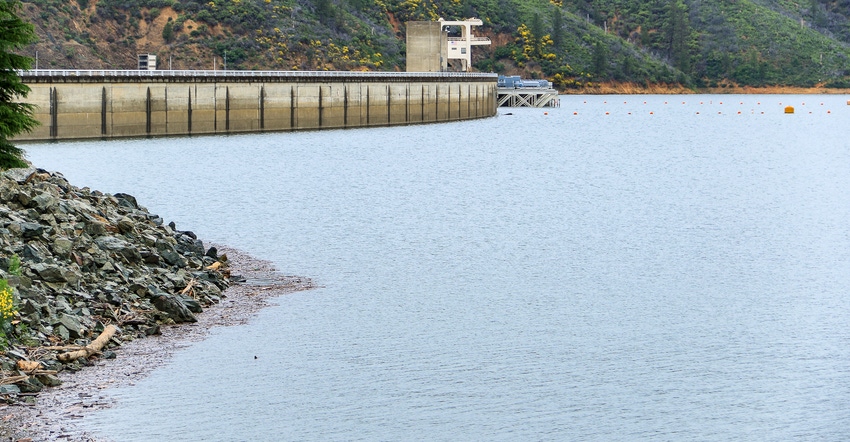
Projected higher inflows to Shasta Lake caused the Bureau of Reclamation earlier this month to rescind its "Shasta Critical Year" designation after hydrologic conditions changed sufficiently.
Los Banos, Calif. farmer and board chairman of the San Luis & Delta Mendota Water Authority, Cannon Michael, said measurable rain in the Shasta Lake watershed in May and early June increased predicted inflows to Shasta Lake enough to avoid the designation. For growers with senior water rights under the Exchange and Settlement contracts with the Central Valley Project, this means full allocation water deliveries will be forthcoming.
Under a Shasta Critical year those contracts allow the Bureau of Reclamation to reduce deliveries to senior water rights holders to 75 percent.
The early water cutbacks forced northern California water agencies to order growers to cut their planting acres this spring by as much as 25 percent. For some rice growers this meant leaving ground fallow this season.
Sacramento Valley rice farmer Kurt Richter called the move "too little, too late" by Reclamation as he cannot go back in and plant more rice this late in the season. Still, through some wheeling and dealing on water and some existing wells on his various farms, he was able to plant about 93 percent of his farm ground, which totals about 5,000 acres across the Sacramento Valley.
Meanwhile, water deliveries to other Central Valley Project contractors will likely remain unchanged, according to Diana Giraldo, spokesperson for Westlands Water District. Users south of the Delta were told earlier this year to expect just 20 percent of their requested allocations. Because of this, and due to market conditions involving U.S. cotton, acreage of California cotton may dip below 200,000 as longtime cotton growers opted to plant different crops or left fields fallow altogether.
Class 1 water users in the Friant Water Authority should get 60 percent of their requested allocation for the 2020 season, unchanged from previous promises.
About the Author(s)
You May Also Like






